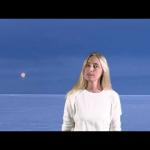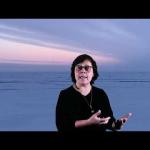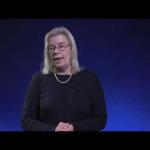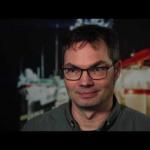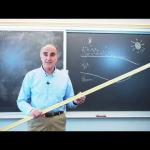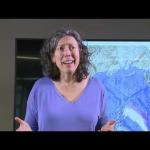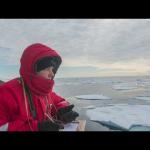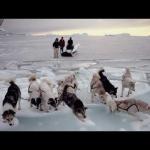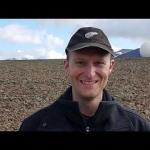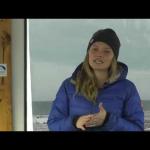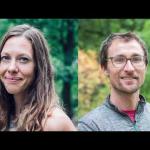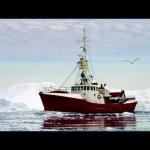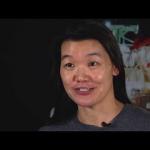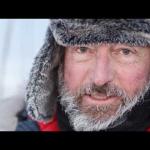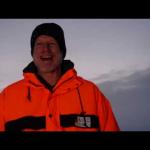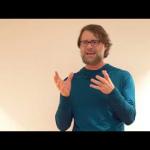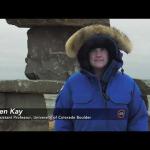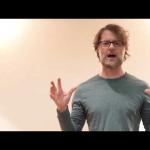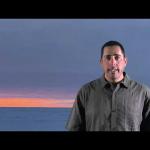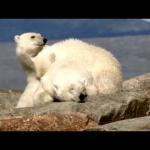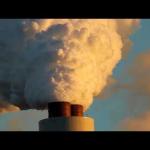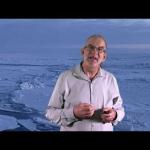Earth Science Stories
This video is part of a collection - “Frozen in the Ice: Exploring the Arctic." Check out the MOSAiC page for more details.
In this specific lesson, Dr. Marika Holland will teach you about climate models. She also asks the question: How will climate extremes and environmental changes in the Arctic reverberate around the world?
Science Content Video
This video is part of a collection - “Frozen in the Ice: Exploring the Arctic." Check out the MOSAiC page for more details.
In this specific lesson, Dr. Amy Solomon will teach you about her role in MOSAiC in coordinating international forecasting efforts. Data collected in the Arctic during the expedition form the basis of more accurate regional and global models in the future.
Science Content Video
This video is part of a collection - “Frozen in the Ice: Exploring the Arctic." Check out the MOSAiC page for more details.
In this specific lesson, Dr. Gunilla Svensson explains how important Earth system models are to understanding where both global and Arctic climate systems are headed. You'll also learn about the key role MOSAiC's modeling team plays in the expedition.
Science Content Video
This video is part of a collection - “Frozen in the Ice: Exploring the Arctic." Check out the MOSAiC page for more details.
In this specific lesson, Dr. Jessie Creamean discusses how aerosols affect clouds and precipitation in the atmosphere and why they're important to the Arctic.
Science Content Video
This video is part of a collection - “Frozen in the Ice: Exploring the Arctic." Check out the MOSAiC page for more details.
In this specific lesson, Dr. Clara Hoppe sheds light on the small but mighty phytoplankton! You'll learn about MOSAiC's special interest in primary production, carbon export, and groundbreaking data scientists expect to glean from the expedition.
Science Content Video
This video is part of a collection - “Frozen in the Ice: Exploring the Arctic." Check out the MOSAiC page for more details.
In this specific lesson, Dr. Hauke Flores describes sea ice as an important driver in Arctic food webs. You'll learn about the serious threats climate change poses to biodiversity and key species dependent on ice cover.
Science Content Video
This video is part of a collection - “Frozen in the Ice: Exploring the Arctic." Check out the MOSAiC page for more details.
In this specific lesson, Dr. Donald Perovich discusses sea ice mass balance. You'll learn about the data collection tools used by MOSAiC scientists including stakes, temperature strings, and autonomous buoys that measure Arctic ice melt and growth through the seasons.
Science Content Video
This video is part of a collection - “Frozen in the Ice: Exploring the Arctic." Check out the MOSAiC page for more details.
In this specific lesson, Dr. Bonnie Light adds new meaning to her name! You'll learn about sunlight's vital role in the Arctic system — specifically, how it affects melting in the summer and how different albedos play into this.
Science Content Video
This video is part of a collection - “Frozen in the Ice: Exploring the Arctic." Check out the MOSAiC page for more details.
In this specific lesson, Dr. Wieslaw Maslowski explains the process of formulating regional models of the Arctic. You'll learn about the relative benefits of such models compared to those at the global scale.
Science Content Video
This video is part of a collection - “Frozen in the Ice: Exploring the Arctic." Check out the MOSAiC page for more details.
In this specific lesson, Dr. Amy Solomon defines process modeling as an iterative process between observations and theory. You'll learn with specific examples how scientists in both the SHEBA and MOSAiC expeditions move through this process in their work.
Science Content Video
This video is part of a collection - “Frozen in the Ice: Exploring the Arctic." Check out the MOSAiC page for more details.
In this specific lesson, Dr. John Walsh discusses how climate change is apparent throughout the Arctic (air, land, ice, and ocean) and that these changes are already impacting humans, wildlife, and the environment.
Science Content Video
This video is part of a collection - “Frozen in the Ice: Exploring the Arctic." Check out the MOSAiC page for more details.
In this specific lesson, Dr. James Overland discusses how sea ice loss can cause major changes in the Arctic climate — and more specifically, in the polar jet stream.
Science Content Video
This video is part of a collection - “Frozen in the Ice: Exploring the Arctic." Check out the MOSAiC page for more details.
In this specific lesson, Dr. Scott Stephenson focuses on the link between climate change and human activities. You'll learn how melting sea ice contributes to economic transformation of the Arctic.
Science Content Video
This video is part of a collection - “Frozen in the Ice: Exploring the Arctic." Check out the MOSAiC page for more details.
In this specific lesson, Kaare Sikuaq Erickson discusses the Ukpeaġvik Iñupiat Corporation (UIC) and its role in nearly twenty-five thousand research sites in/around Barrow, Alaska. You'll also learn about Arctic indigenous populations that live in areas affected by climate change.
Science Content Video
This video is part of a collection - “Frozen in the Ice: Exploring the Arctic." Check out the MOSAiC page for more details.
In this specific lesson, Alysa McCall and Dr. Steve Amstrup talk all things polar bear! You'll learn how climate change affects them and hear from Trude Hohle about their role in the MOSAiC expedition.
Science Content Video
This video is part of a collection - “Frozen in the Ice: Exploring the Arctic." Check out the MOSAiC page for more details.
In this video, Drs. Anne Gold and Matthew Shupe conclude the series "Frozen in the Ice: Exploring the Arctic" with a summary of the course's major lessons.
Science Content Video
This video is part of a collection - “Frozen in the Ice: Exploring the Arctic." Check out the MOSAiC page for more details.
In this specific lesson, Dr. Matthew Shupe broadly defines MOSAiC. From the very first expedition of Fridtjof Nansen to present day, Arctic research remains at the forefront of environmental science and developments in our world's changing climate.
Science Content Video
This video is part of a collection - “Frozen in the Ice: Exploring the Arctic." Check out the MOSAiC page for more details.
In this specific lesson, Dr. Benjamin Rabe talk about the MOSAiC expedition as a whole and what kinds of things scientists will be studying. From observing tiny microorganisms to larger weather patterns, MOSAiC aims to better understand the Arctic system and how it affects change on a global scale.
Science Content Video
This video is part of a collection - “Frozen in the Ice: Exploring the Arctic." Check out the MOSAiC page for more details.
In this specific lesson, Dr. Allison Fong discusses Arctic ice melt and what this means for the surrounding biological environment. You'll ponder the question: Will the Arctic be net primary productive or will it ultimately be a source of carbon?
Science Content Video
This video is part of a collection - “Frozen in the Ice: Exploring the Arctic." Check out the MOSAiC page for more details.
In this specific lesson, Tim Stanton discusses the role of ocean stratification in controlling the way heat interacts with sea ice in the Arctic.
Science Content Video
This video is part of a collection - “Frozen in the Ice: Exploring the Arctic." Check out the MOSAiC page for more details.
In this specific lesson, Dr. Bill Shaw will teach you about ocean circulation driven by wind patterns and buoyancy.
Science Content Video
This video is part of a collection - “Frozen in the Ice: Exploring the Arctic." Check out the MOSAiC page for more details.
In this specific lesson, Dr. Matthew Shupe breaks down the work of MOSAiC's atmosphere team. Following team goals and using such tools as lasers, radar technology, and weather balloons, scientists can better understand the Arctic system (air, ice, and sea) as a whole.
Science Content Video
This video is part of a collection - “Frozen in the Ice: Exploring the Arctic." Check out the MOSAiC page for more details.
In this specific lesson, Drs. Jennifer Kay and Ariel Morrison introduce positive and negative albedo feedbacks that are important to the Arctic climate system (and polar bears!).
Science Content Video
This video is part of a collection - “Frozen in the Ice: Exploring the Arctic." Check out the MOSAiC page for more details.
In this specific lesson, Dr. Matthew Shupe explains the significance of clouds in the Arctic system and how they play important roles in precipitation, energy transfer, and climate modeling.
Science Content Video
This video is part of a collection - “Frozen in the Ice: Exploring the Arctic." Check out the MOSAiC page for more details.
In this specific lesson, Dr. John Cassano describes the role of the Arctic in the Earth's energy budget and climate system.
Science Content Video
This peer-reviewed educational video introduces feedbacks that are important in the Arctic climate system.
Science Content Video
This peer-reviewed educational video explains human-caused climate change including the greenhouse effect.
Science Content Video
This video is part of a collection - “Frozen in the Ice: Exploring the Arctic." Check out the MOSAiC page for more details.
In this specific lesson, Dr. Mark Serreze describes the Arctic as a highly varied environment undergoing some rapid changes. You'll learn that MOSAiC seeks to answer the questions: Why is the Arctic changing, and where are we headed?
Science Content Video
